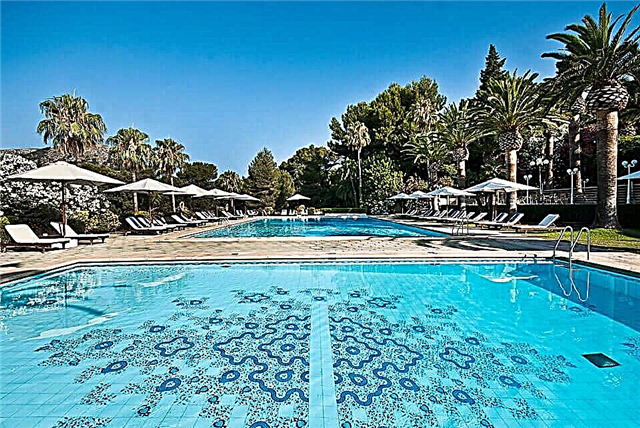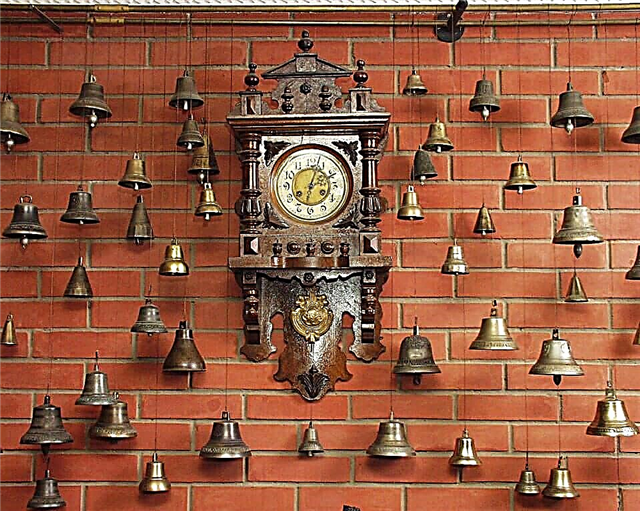In the south of the ancient city of Alexandrov, on the slope of a small hill, a beautiful temple rises, combining the traditions of mature classicism and neo-Gothic. The snow-white church stands out among the typical buildings. The neighboring houses stand aside, and from all sides the Bogolyubsky temple opens in all its glory. The dome and the graceful church dome, covered with gold stars, look especially elegant. Near the church, you can often see pilgrims, as well as tourists traveling to the cities of the "Golden Ring" of Russia.
The history of the temple in the 19th century
Until the end of the 18th century, the deceased residents of Aleksandrov were traditionally buried in the graveyards of parish churches. However, the city grew, and the authorities allocated the territory for the first citywide cemetery. Time passed until the Aleksandrovsky churchyard was landscaped, and then local residents raised money for the construction of a cemetery church.

The Church of the Bogolyubskaya Icon of the Mother of God from a bird's eye view
The brick church at the cemetery was built in 1800. Soon the territory around it was surrounded by a stone fence and a three-tiered bell tower was erected. It was considered inappropriate to start their own parables for the new church. By that time, there was a large Nativity of Christ Cathedral, in which several priests served, therefore the Bogolyubsky temple was attributed to the cathedral. Most of the services were conducted by the priests of the cathedral, but on special holidays it was done by the priest from the Transfiguration Church. According to documents preserved from those times, it is known that the cemetery church had everything needed for divine services - utensils, icons and books.
24 years passed, and for the money allocated by local merchants Fyodor Nikolayevich Baranov and Alexander Mikhailovich Kalenov, two side-chapels were added to the refectory church of Bogolyubskaya. They were consecrated in honor of the holy great martyrs Barbara and Theodore Stratilates.

Bogolyubskaya icon
The icon to which the temple was dedicated is revered by the Russian Orthodox Church as miraculous. It was created in the XII century, and is the oldest monument of icon painting of Russian origin. The icon-painting image appeared at the behest of the Grand Duke Andrei Yuryevich Dolgoruky, who had the nickname Bogolyubsky (1111-1174).
According to legend, in the summer of 1155, the Suzdal prince transported the miraculous icon of the Vladimir Mother of God from Vyshgorod to Zalesye. However, on the way, the Mother of God herself appeared to him and asked to leave the revered image in Vladimir. In the place where the wonderful meeting took place, the prince built a village, which later received the name Bogolyubovo, and the Bogolyubsky monastery was founded there.
In the manner of writing, the Bogolyubskaya icon is similar to the Vladimirskaya icon of the Mother of God. It is distinguished by the softness of the lines and the mutedness of the color. The isographers used a cypress board as a basis. The icon depicts the Mother of God without a baby, standing in full growth. In heaven, in the upper right corner, the face of Jesus Christ is visible. In the hands of the Mother of God holds a scroll on which the text of the prayer is written. Today the ancient icon is kept in the Vladimirsko-Suzdal nature reserve and is being restored.

The fate of the cemetery church in the 20th century
At the beginning of the last century, the hereditary honorary citizen of the city, Nikolai Alekseevich Pervushin, was elected the headman of the Bogolyubsky temple. In 1913, his diligence and diligence in the arrangement of the church parish was marked with a silver medal on the Stanislavskaya ribbon, which was supposed to be worn on the chest. After Pervushin the church elders were Fyodor Shchennikov and Fyodor Dunaev.
In 1922, a mass expropriation of church values took place throughout the country - liturgical utensils, icon frames and expensive fabrics were taken from all monasteries and churches. A special commission came to the Bogolyubsky temple and described all the property that could be melted into gold and silver or sold. The statement she made consisted of 28 items. The parishioners managed to defend most of the liturgical utensils and relics, but they were forced to pay the commission their value in money. Three valuable things from the temple were taken by the local museum. These were vestments from two icons and an Empire chalice made in 1829.

The northern facade of the Church of the Bogolyubskaya Icon of the Mother of God
When an active anti-religious campaign began in the state, churches began to be closed and destroyed. In 1929, church services in the Nativity of Christ Cathedral ceased, and then, by the decision of the regional executive committee, the Alexander cemetery church was closed. The authorities considered that the local clergy adhered to the views of Patriarch Tikhon that were undesirable for the Soviet regime, therefore, believers simply stopped being allowed into the church.
Very little time passed, and a new church community of "renovationists" was registered in Aleksandrov, who advocated a split with the patriarchate and wanted to cooperate with the Soviet government. The lease of the religious building was renewed with the members of this community, so in the summer of 1929 other priests were conducting services in the cemetery church.
Soon the old churchyard was demolished, and a market was set up on its territory. The area formed near the church was named "Bazaar". In the late 1920s - early 1930s, the Alexander authorities did not abandon the idea of closing the cemetery church and actively campaigned for this in local newspapers.

View of the Church of the Bogolyubskaya Icon of the Mother of God from the rear
This was the time when bells were banned throughout the country, so the temples were silent. In 1934, 6 bells of the Bogolyubskaya church were removed to be melted into metal. The bell tower that no one needed stood for another two years, and then it was demolished. There are still photographs that capture the moment of the explosion and collapse of the bell tower building.
In the fall of 1936, the Bogolyubsky temple was divided into two. In one part of it, the "renovationists" held church services, and in the other, the followers of Patriarch Tikhon - the "old churchmen". Moreover, the local authorities were constantly accused of "anti-Soviet agitation." It didn't take long, and in 1937 the first wave of arrests swept through the city. They took everyone indiscriminately - both priests "renovationists" and "old churchmen" were in dungeons. The trouble has not spared the most active parishioners. Most of those arrested were soon shot.
Since 1938, the services in the church stopped, and not a single functioning church remained in Aleksandrov. For the next few years, the church stood abandoned and badly dilapidated without leaving. It had a depressing appearance: the window frames, doors and bars were removed from it, the iconostasis was dismantled for firewood, the floor inside the building was covered with a layer of sand and debris. The ceilings were also partially destroyed and the central heating was in need of repairs.

Dome of the Church of the Bogolyubskaya Icon of the Mother of God
Beginning in 1944, the townspeople sent one appeal after another to the executive committee of the city council, asking them to return the temple to them. But they were not satisfied. The church continued to stand, deteriorating more and more year after year.
The Bogolyubsky temple was handed over to the Christian community only in the mid-1990s, and the parishioners were able to start restoring it. It took several years to free the building and territory from debris, to plaster and whitewash the temple. The destroyed bell tower was rebuilt in 1998 using old photographs taken at the beginning of the last century.
Architectural features and interior of the temple
The small church is very beautiful. She successfully combines minimalism and aristocratic sophistication. The main volume of the temple is rectangular and stretches from north to south. On the east side, a wide altar apse is adjacent to it.

Dome of the Church of the Bogolyubskaya Icon of the Mother of God
Bell tower of the Church of the Bogolyubskaya Icon of the Mother of God
On the four there is a large-sized light drum. The bright blue dome is colored with gold stars, and is crowned by a small cupola of the same color. On the west side, a one-story refectory is attached to the church. The high bell tower stands separately from the temple. It is visible from afar thanks to a thin gilded spire.
In the decoration of the church, features of mature classicism are visible - strict Tuscan pilasters, smooth friezes and neat half-columns. The refectory windows are made in the neo-Gothic tradition. Above the entrance you can see a copy dedicated to the temple.
The interior decoration matches the exterior. There are no paintings here - the walls and ceilings are neatly whitewashed.
Current state and visiting regime
The church has been restored and services are held regularly. In addition to the main altar, two side-chapels are illuminated in the church - in honor of the great martyrs Barbara and Theodore Stratilates. Not far from the church, at 4 Voenny Pereulok, you can see a house built in 1904 and previously owned by the priest P.I. Sokolov.

Icon of the Mother of God above the entrance to the church
How to get there
The temple of the Bogolyubskaya Icon of the Mother of God is located in Krasny Lane, 2, near the intersection with Bazarnaya Street. If you use public transport, it is convenient to get to the church by buses No. 5, 6 (stop "Market"). It is easy to walk from the railway station in Aleksandrov to the temple (1.3 km).
Attraction rating











